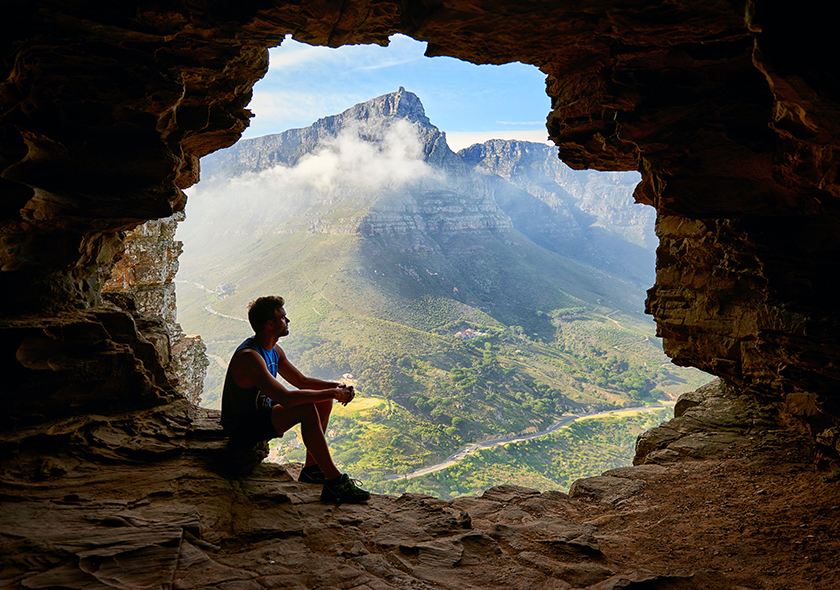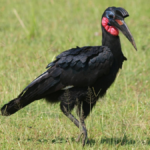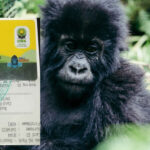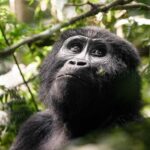Birding sites in Uganda
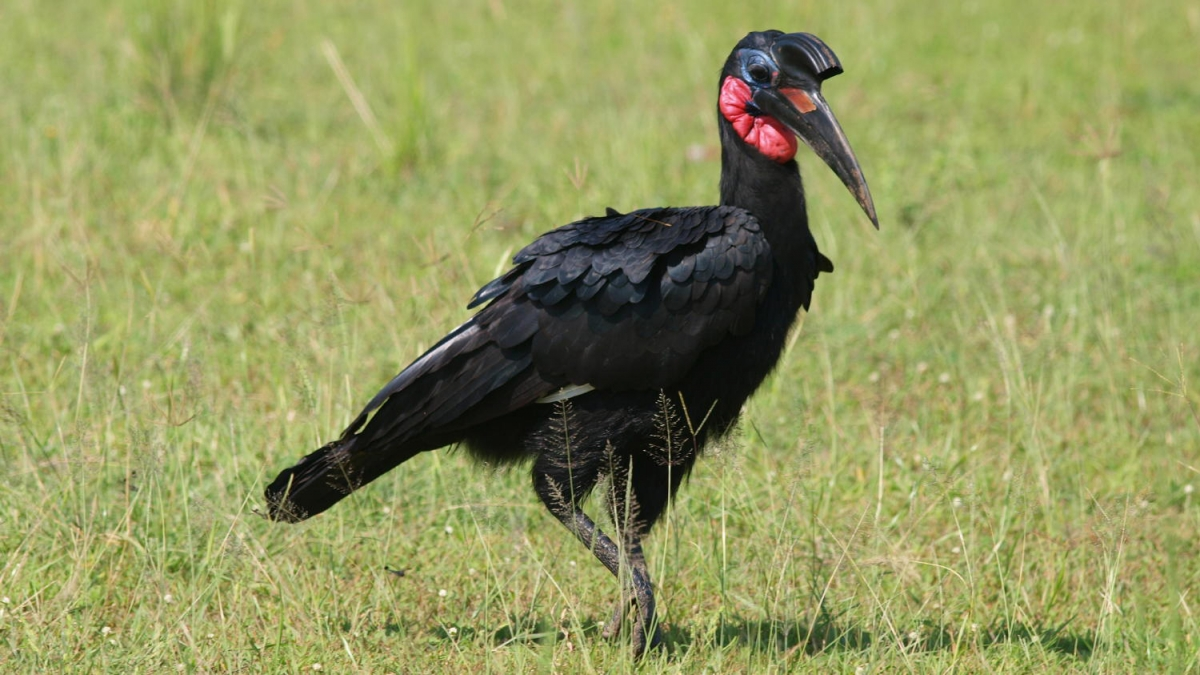
Birding sites in Uganda
Birding sites in Uganda
Birding sites in Uganda: Uganda is one of the appropriate birding destinations in Africa offering a tremendous bird list of more of than 1,073 recorded different bird species making up 50 percent of Africa’s bird species and 11 percent of the world species. This endless bird list is comprised within a small territory hence having one of the highest concentrations of birds in Africa. Uganda has a huge variety of birds and a lot of migratory birds because it has a wide range of environments that can’t be found anywhere else in Africa. Uganda is in an exceptional safari location because it is in all of Africa’s major biological zones. Each zone has its own bird species, many of which are limited in their range. Uganda has up to 34 Important Bird Areas (IBA), many of which have been made into places to watch birds and go on tours to see birds. Also, the birding community in Uganda persists to discover other new bird-rich spots across the country and establishing birding trails. Even though Uganda has about 34 places to watch birds, here are the top places to do so.
Birding sites in Uganda.
Mabamba Swamp.
Mabamba swamp is a highest wetland birding site famous for the Shoebill stock bird frequently regarded as “Uganda’s most sought bird” by nature lovers. Mabamba Swamp is found west of Entebbe on the northern shore of Lake Victoria, covering about 2,424 hectares with thick marshes of papyrus, water lilies and other wetland grasses. Mabamba swamp is an Important Bird Area (IBA) and a Ramsar site. The swamp is home to more than 300 bird species, including many that are threatened around the world, 7 of Uganda’s 12 species that can only live in the Lake Victoria biome, which is the Papyrus Gonolek, and a lot of birds that only live in wetlands. From October to March every year, large groups of Palearctic migrants cross through the swamp. When you go birding safari in Mabamba Swamp on Lake Victoria, you might see the rare and Vulnerable Shoebill stork, black crowned night heron, great blue Turaco, grey crowned crane, brown parrot, Hadada Ibis, pied kingfisher and among others.
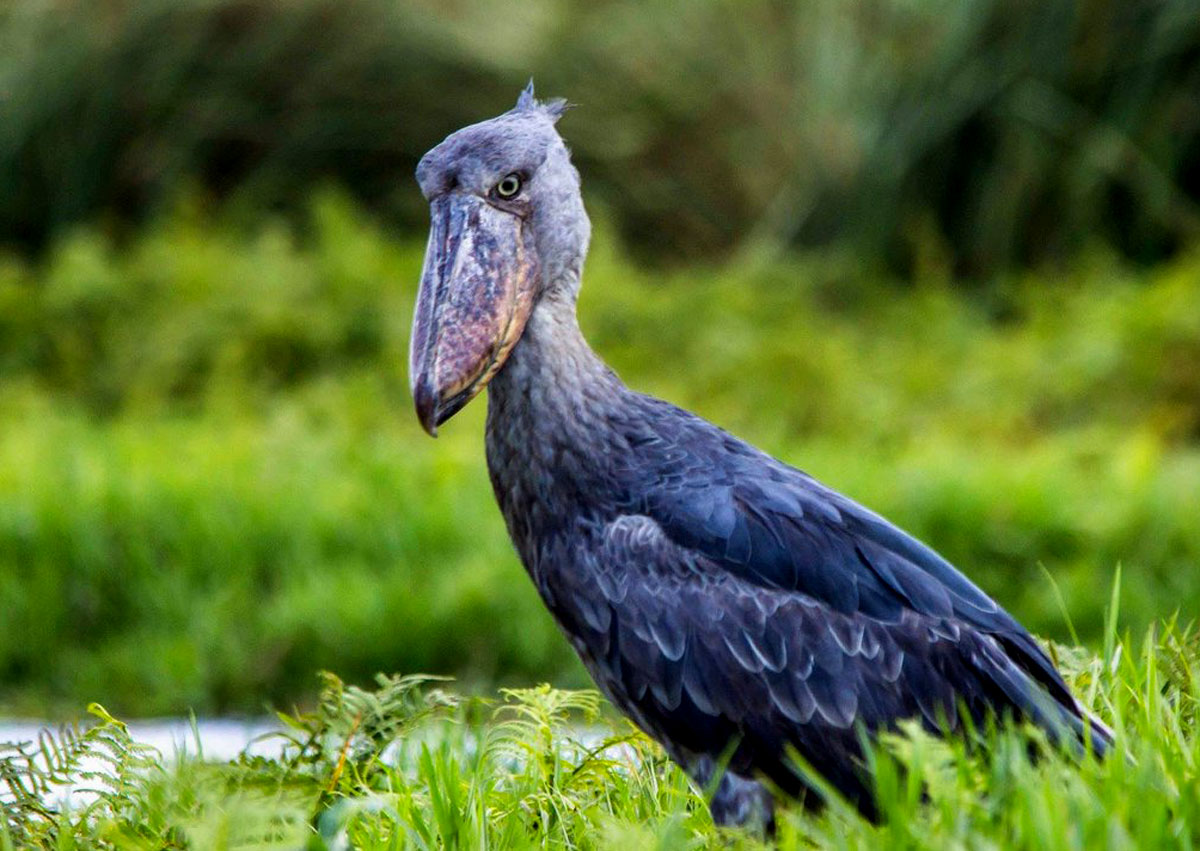
From Kampala or Entebbe, there are a number of ways to get to Mabamba Swamp. The best way to get to Mabamba is from Entebbe’s Nakiwogo landing site, where you can take a 10-minute ferry ride to Kasanje landing. From there, it takes about 20 minutes to drive to Mabamba through farms and open fields, where you can see lots of garden birds. Birding safari in Mabamba swamp is done from a motorized wooden boat that goes through a maze of tracks that cut through the thick marshes.
Entebbe Botanical Gardens.
People usually go to the Entebbe botanical gardens to rest in the shade of the trees. It’s a popular safari destination for long walks through nature to enjoy the lush greenery and watch monkeys and birds. But the Botanical Gardens is an established destination to watch birds in Uganda, and many people do so as a single unit. The gardens have been there since the year 1901. They go from the shores of Lake Victoria all the way to a green, tree-filled forest area. The Entebbe botanical gardens are an excellent spot to watch birds because they have a good mix of species from water, open land, and forests. Some of the birds that live here includes Pink-backed Pelican, the Long-tailed Cormorant, Eastern Grey Plantain-eater, Purple-banded sunbird, Black-crowned Night Heron, Cattle Egret, Little Egret, Black-headed Heron, Hammerkops, African Jacana, African Open-billed Stork, Saddle-billed Stork, Marabou Stork, Glossy Ibis, Egyptian Goose, Yellow-billed Duck, and Black Kite, Yellow bellied stork, just to name a few.
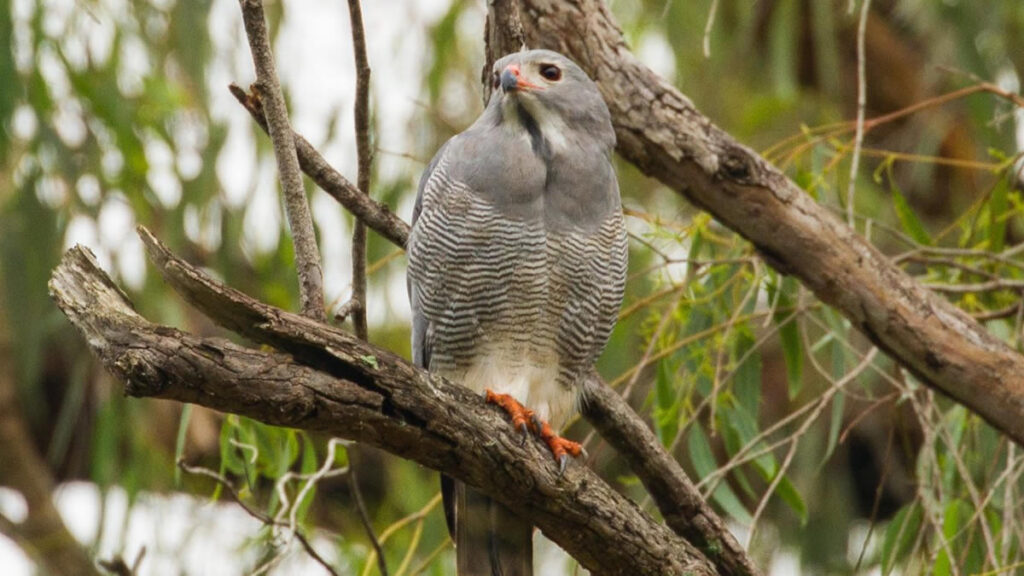
Semuliki national park.
Semuliki national park is situated in Bundibugyo district close to Fort portal town adjust to Congo Ituri rain forest. The park is a home to Uganda’s largest Sempaya hot springs, about 53 mammal species, and over 435 bird species. This makes it one of the top destinations to go birding safari in Africa, earning it the name “True birders’ Haven.” Semliki Forest is the only example of Congo-Basin vegetation in Uganda. Many Guinea-Congo biome species reach their eastern limits in Semuliki, making it one of the best places to see forest birds in the country. About 130 species from the Guinea-Congo forests Biome have been found in the Semuliki forest. Capuchin, white-tailed/Piping hornbill, blue-headed, crested flycatcher, Orange Weaver, and Red-billed Malimbe are all other types of birds. Semuliki National Park is also close to Mount Rwenzori. The River Semuliki flows along the western edge of the park and flows into Lake Albert. The park is surrounded by swamps where we can see birds like Papyrus Gonolek and Caruther’s Cisticola. Other interesting birds in Semuliki national park include the Black-wattled hornbill, Congo Serpent Eagle, Long Tailed Hawk, White-throated Alethe, Double-toothed Barbet, Blue headed Coucal, Red Thighed sparrow hawk, White Tailed Robin Chat, Crested Malimbe and among many others.
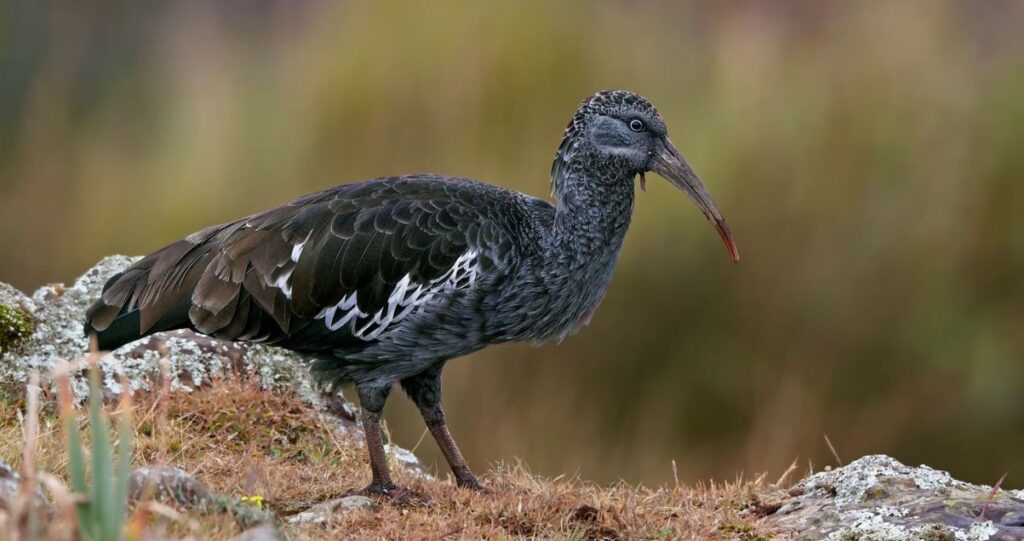
Lake Mburo national park.
Lake Mburo National Park is Uganda’s smallest savannah national park, and there are large numbers Impala antelopes, zebras, Uganda Kobs and among other animal species. But Lake Mburo National Park is also the best place in Uganda to see birds, which is why people book Uganda safari tours to see birds and other animals. The park has about 350 bird species and the primary birding spots include the swampy valleys of Miriti and Warukiri, viewing platforms near the salt licks and in the forest as well as the roadsides between Rwonyo camp, Jetty and Rubanga forest. Birds like African finfoot, Greater painted-snipe, Mosque swallow, Papyrus yellow warbler, Southern ground hornbill, shoebill stork, Yellow-rumped tinkerbird and among are often seen in Lake Mburo national park. This is the only place where you can see the red-faced barbet, which is the main species of the forest. Doing a birding safari on a Uganda Safari tour is an excellent option for any traveler especially Lake Mburo national park to be capable to do other activities like game viewing, horseback rides, and boat cruises.
Bwindi Impenetrable national park.
In Uganda, Bwindi Impenetrable National Park is best known for gorilla trekking safari. However, Bwindi forest has become a paradise for bird fans because it has one of the best montane forests where we can find many different kinds of birds. There are about 350 different kinds of birds in Bwindi Forest, and 14 of them can only be seen in Uganda. Over 90% of the animals in the Albertine rift are unique to that area. There are also about 24 birds that are only found in the Albertine rift, such as blue-headed sunbird and Neumann’s warbler. The most at-risk species are Grauer’s Broadbill and Shelley’s Crimsonwing. The best places to see birds in Bwindi forest are Buhoma waterfalls in Buhoma sector of Bwindi Impenetrable national park, Mubwindi swamp trail, and Bamboo zone. Birds like Rwenzori Double-collared, Strange Weaver, Black bee-eater Cinnamon-chested bee-eater, Regal Sunbird, Yellow-eyed Black Flycatcher, Olive-breasted greenbul, Grauer’s Rush Warbler and others, can be seen in Bwindi forest. Other birds that can be seen in Bwindi forest include the Evergreen Warbler, Rwenzori Batis, Turner’s Eremomela, African Pitta, African broadbill, Black-billed turaco, Black-faced rufous warbler and among others.
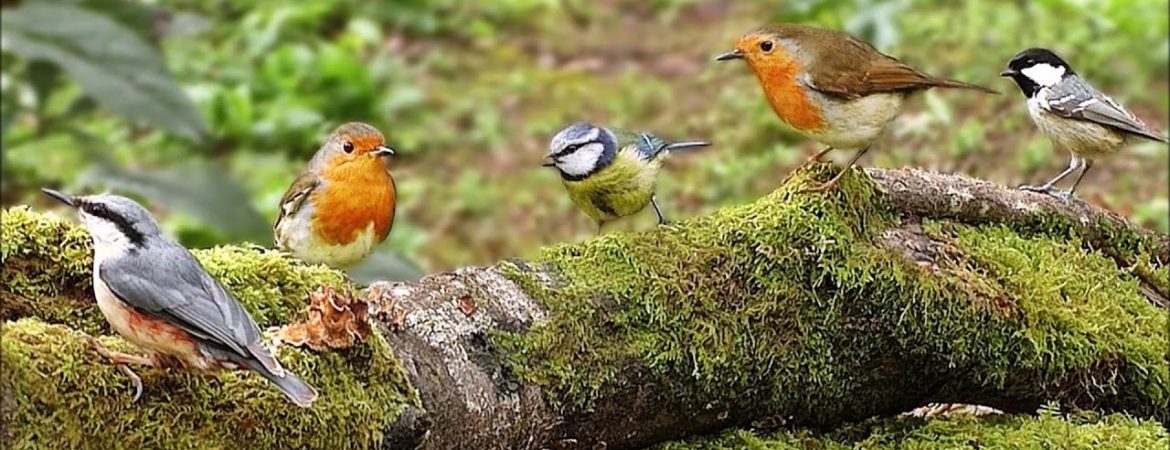
Queen Elizabeth national park.
Queen Elizabeth National park is found in Rubirizi district in western part of Uganda covering a total land area of 1 978 sq. km, making it the second largest national park in Uganda. It is 900 metres above the nearby Lake Edward and 1,845 metres above sea level at the top of the western Rift Valley-eastern Escarpment. It is home to the tree-climbing lions, but it is also one of the finest places to watch birds in Uganda. About 600 kinds of birds have been seen in Queen Elizabeth National Park, making it one of the most fascinating safari destinations to visit on a Uganda safari tour. In Queen Elizabeth national park, there are different kinds of birds in open forests, rivers, open grasslands, lakes, and permanent swamps.
During a cruise along Kazinga channel, you might see water birds like the White-faced Whistling, African jacana, yellow bellied stork, Spur-winged Plovers, Squacco Heron, Fish Eagle, Pink and White-backed Pelicans, Long-tailed Cormorants, and hammerkops, to name a few. Some of the other birds you can see in the park are the black-ramped buttonquail, Papyrus canary, Black bee-eater, African fish eagle, Long-tailed cormorants, raptors, marabou stork, cattle egrets, White winged terns, Grey-headed kingfisher. Some of these birds can often be heard in the morning, when their calls echo in the tree branches. Other places in Queen Elizabeth National Park that are good for bird watching safari are Kyambura Gorge, Maramagambo forest, Kasenyi area, Mweya Peninsular, Ishasha sector, Lake Kikirongo, Katunguru Bridge area, and Katwe. In Kyambura Gorge, you can see birds like Hairy breasted barbet and Grey wood pecker. If you want to watch birds in Queen Elizabeth National Park while on a Uganda tour, you should give yourself at least three days to have the wonderful one.
Mabira forest.
Mabira forest was once the most extensive rainforest in Uganda but because of deforestation as a result of economic purposes; the forest’s now is covered by an area of about 306sqkm. Mabira forest is an ideal spot to visit, especially if you like birds, because it is a fantastic safari destination to watch birds and is home to more than 300 different kinds of birds. Mabira Forest Reserve is situated 56 km on Kampala-Jinja highway in Buikwe district, easily accessible from Kampala and other towns of Uganda.
Book a thrilling safari for an excursion to Mabira forest for a day bird watching safari experience. This birding adventures starts when you are picked up your hotel in Kampala/Entebbe then drive to Jinja taking about 2-3 hours on Kampala-Jinja route depending on the traffic jam. When you reach the forest, report to the offices where you will be provided information about the forest and also assigned a guide who will help you pursuit out and recognize the different birds during your walk in the forest. Expect to see a lot of birds as you can expect to see over 315 birds in a day such as the Long-crested Eagle, Red-chested Sunbird, Open-billed Stork, White-threatened Bee-eater, Cattle Egret, Marabou Stork, there is the Pied Crow, also the Black Kite, Lizard Buzzard, the Black-headed Weaver, African Thrush, Hadada Ibis, Hamerkop, Broad-billed Roller, Palmnut Vulture and Bronze Mannikin as well as the Great Blue Turaco, Yellow bellied Kite, Hooded Vulture, African Harrier-Hawk, Crowned eagle, Black Cuckoo, Little Swift, Crowned Hornbill, Hairly-breasted Barbet, Double-toothed Barbet, Sand Martin, Angola swallow, Yellow Wagtail and among others.
Apart from bird watching safari in Mabira forest, your day trip can be paired with other activities like the Zip-lining experience and a primate’s walk. The forest is said to host about 6 species of primates such as the Grey cheeked Mangabey monkeys, Vervet monkeys, Black and white Colobus monkey to mention a few, Other features include the tree species and visit of the Griffin falls in the forest.
Murchison falls national park.
Murchison Falls National Park is the biggest national park, with an area of about 4,300 square kilometres. It was named after the dramatic Murchison Falls, which flow into a gorge where the world’s longest river blasts and flows down to become a River. The park has Ugandan savannah, riverine forests, woodland plants and animals, and a lot of big animals. People say that it is home to the “big four” animals, which are lions, leopards, buffaloes, and elephants. There are also Giraffes, Hartebeests, Oribis, and Kobs, just to name a few. Murchison Falls National Park is one of the best sites in Africa to see birds. There are about 450 different kinds of birds there. You can see these birds in Karuma wildlife reserve, Budongo forest, and the northern bank of the park, where game drives are done. Twenty species from the three non-qualifying biomes live in the park. There are 11 species from the Guinea-Congo forest, 6 species from the Afro-tropical Mountains, and 3 species from the Somali-Masai biome. A boat cruise to the delta is the focal point for a passionate birdwatcher. There are many land birds and sea birds in the park. Some of the birds that live here are African Fish Eagle, African Skimmer, and Shoebill stock, which is hard to find but easy to see along the Riverside. On a Uganda safari, you might see Abyssinian ground hornbill, Black-headed gonolek, Denham’s bustard, Goliath heron Palm-nut vulture, Piapiac, Silver bird, Black-headed lapwing, Swamp flycatcher, Speckle-fronted weaver and among others.
Lake Bunyonyi.
Lake Bunyonyi is in the southwestern corner of Uganda, between the towns of Kabale and Kisoro. The word Bunyonyi means “small birds,” which means “a place of little birds.” It is an amazing spot to watch birds, and it is said to be the deepest lake in East Africa, with a depth of about 900 metres. It is surrounded by steep tiered hills. Lake Bunyonyi has recorded over 200 bird species and some of these include; Grey crowned crane, African harrier hawk, Slender-billed baglafetch, egrets, White tailed blue monard, golden-backed weaver, pin tailed whyder, Bronzy sunbird, malachite kingfisher herons, African Harrier Hawk, egrets, Slender-billed baglafetch and many more. The lake has over 29 small islands including the punishment Island, Bwana, Kyahugye, Njuyeera, Bucuranuka, Bushara to mention a few. All of these Islands have a lot of different kinds of birds that bird watchers who come to the Lake can enjoy. This same lake is home to many otters, crabs, and many different kinds of birds. It is located between the districts of Kisoro and Kabale, which are close to the border with Rwanda.
Apart from bird watching, bird lovers may additionally take part in some other safari activities including the spot fishing, boat rides, cultural walks, camping, bamboo walks that are guided trails and these have been established and are so recommended for anyone who may be looking for a long stretch, nature walks and many more. After gorilla trekking safari in Bwindi Impenetrable National Park, people often go to Lake Bunyonyi to recuperate. Lake Bunyonyi can be seen at any time of the year.
Kibale forest national park.
Kibale forest national park is most recognized for chimpanzee trekking safari in Uganda. The forest is located in the western part of Uganda in Kabarole district near Fort portal which is the tourism city of Uganda. Kibale forest includes one of the loveliest and diverse areas of tropical forest in Uganda. On an elevated hill, most of the northern and central parts of the park are covered in forest, with some patches of grassland and swamp. There are 370 different kinds of birds in Kibale forest, and you can see them while carrying out chimpanzee trekking safari in the park or in Bigodi swamp, which is the best place to see a range of birds and primates. The most sought-after bird in the jungle is the Green-breasted Pitta. Some of the other birds recorded in Kibale forest include; Abyssinian ground thrush African pitta, Blue-breasted kingfisher, Brown illadopsis, Cassin’s spinetail, Black-capped Cuckoo, Black-crowned Tchagra, Barn swallow, African Dusky Flycatcher, Black-necked Weaver, African Wood Owl, Chubb’s Cisticola, African Shrike-flycatcher, Black bee-eater, Blue-throated Brown Sunbird, Masked apalis, Red-chested owlet, Western nicator, Rwenzori apalis and among others.
Rwenzori Mountains National Park.
Rwenzori Mountains in Uganda are dwelling to about 220 bird species, including 19 Albertine Rift endemics, with habitats spanning from high elevation forest and open montane grasslands, to peat bogs, snowfields and glaciers. The mountains are in western Uganda, and the highest peaks, which are covered in snow, are 1,000m high. Most birding happens in the forest zone, where you can see long-eared owl, Lagden’s Bush Shrike, Greenbuls, Archers robin-chat, Lagden’s bush-shrike, blue-headed and golden-winged sunbird, white-starred robin, slender-billed starling, collared Apalis, Regal sunbird, Green White-eye, Toro Olive Greenbul, Red-faced woodland warbler, White Necked Raven, Kivu Grosbeak, Regal sunbird, cinnamon-chested bee-eater, and bearded vulture and among others.
Budongo Forest.
Budongo Forest has two main sections Kaniyo Rabidi (Murchison Falls National Park), and the Royal Mile and Busingiro areas found south of Murchison. It is on the edge of the Albertine Rift valley and protects the largest native forest area in East Africa. About 360 kinds of birds live in Budongo. At Royal mile, look for the shy and secretive Nahan’s francolin, quick Cassin’s spinetail, and delicate chestnut-capped flycatcher. Find the beautiful chocolate-backed, blue breasted, and African dwarf kingfishers as well. There are illadopses and alethes in the forest, and there are so many different kinds of greenbuls that it’s hard to believe. But for those who don’t fancy cryptic birds, there are an abundance of more colourful species such as the white-thighed hornbill and black bee-eater. Other species include African dwarf kingfisher, Cassin’s hawk eagle, Crowned eagle, Grey-headed sunbird, Chocolate-backed kingfisher, Little green sunbird, Olive-breasted greenbul, Puvel’s illadopsis, White-spotted flufftail and among others.
Best time for bird watching in Uganda.
Most people don’t know when is the best time to go birding safari or see birds in Uganda, since a birding safari can be done at any time of the year. However, the month of January, March, July, August and September are said to be the best time to do a bird watching safari experience in Uganda as when compared to the other months which are the rainy seasons, when the rains are heavy, there are challenges like difficulty in crossing the roads and thus delaying because of the impassable roads and it also makes the hiking trails slippery which can lead to limiting ones bird watching time. Plan carefully for your safari to see birds you will have unforgettable memories.
All Categories
Recent Posts
Birding sites in Uganda
Is gorilla trekking worth the money?
Is it safe to go for gorilla trekking in Uganda?
